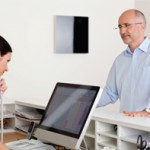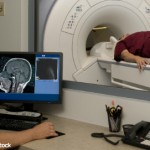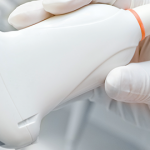Take the challenge. M10.072—Acute gout has an Excludes 1 note of chronic gout (M1A.-). This means that acute gout and chronic gout cannot be coded for the same encounter, as the codes are mutually exclusive. M45.6—The patient is diagnosed with ankylosing spondylitis of the lumbar region. M81.8—Other osteoporosis without current pathological fracture. M79.622—The patient has…
Search results for: chronic pain
Rheumatology Coding Corner Question: Coding for Acute Flare of Idiopathic Gout
It has been two months since the implementation of ICD-10, so everyone has gotten a feel for the new code set. Let’s see how well you are doing in your diagnosis coding for rheumatology-specific conditions. A 55-year-old female patient presents for a follow-up visit of idiopathic chronic gout of multiple joints without tophi. She complains…

How to Keep Patient Appointments Running on Time
Nobody likes waiting to see their physician. In fact, a whopping 97% of patients are frustrated by wait times at the doctor’s office, a study has reported.1 That’s a lot of unhappy patients. Fortunately, a practice can do many things to help keep patient appointments on time—beginning with proper scheduling techniques and monitoring patients’ progress…

New Evidence MRI Can Be Used to Monitor Neuromuscular Disease Progression
In a study of patients with Charcot-Marie-Tooth disease, researchers found that MRI scans can be used to detect the muscle water changes that precede marked intramuscular fat accumulation that may contribute to the disease’s presentation. MRI biomarkers may prove useful in clinical trials for therapies for this and other neuromuscular disorders by enabling researchers to measure disease progression…

Rheumatology Research Foundation Scholarships Help Students Attend ACR/ARHP Annual Meeting
Seven students pursuing rheumatology-related careers will head to San Francisco in November on a Student and Resident ACR/ARHP Annual Meeting Scholarship—awards that are open to students and residents from states that are underserved by rheumatology professionals. The Rheumatology Research Foundation has awarded the students $750–1,500 toward travel expenses and registration for the ACR/ARHP Annual Meeting,…
U.S. Drug Benefit Managers Clamp Down on Specialty Pharmacies
NEW YORK/LOS ANGELES (Reuters)—In recent days, the largest U.S. managers of private prescription drug benefits have cut off at least eight pharmacies that work closely with drugmakers, intensifying scrutiny of a system that helps inflate drug prices, officials at the benefit managers told Reuters. The terminations come from payers who together manage drug benefits for…

Health Video Games Spark Interest, Try to Gain Traction
In the late 1990s, Thomas Baranowski, PhD, professor of pediatrics specializing in nutrition at the Baylor College of Medicine, Houston, applied for a grant. For years, he had been interested in finding ways to get children to change their diet and physical activity. He decided to try a video game, and he got the money…

Legalities of Telemedicine
A brief has been filed with the U.S. Supreme Court that, if the court decides to hear the case, could have wide-ranging implications for online medical care and the limits of a physician’s First Amendment right to free speech. Medical Advice Via e-Mail Institute for Justice Senior Attorney Jeff Rowes filed the brief at the…

Musculoskeletal Ultrasound: A Valuable Tool for Diagnosing Rheumatic Illnesses
Musculoskeletal (MSK) ultrasound is a valuable imaging modality for the practicing rheumatologist and provides an efficient tool with high diagnostic value in the evaluation of patients with musculoskeletal complaints. The use of MSK ultrasound has evolved in the U.S. due to the emergence of less-expensive, portable ultrasound units, which provide high-quality gray-scale and power Doppler…

FDA Issues Stronger Nonsteroidal Anti-Inflammatory Drugs (NSAIDs) Warning
The U.S. Food and Drug Administration (FDA) has toughened the existing warnings for nonsteroidal anti-inflammatory drugs (NSAIDs) due to their stroke and myocardial infarction (MI) risk increase.1 Due to a continual review of these products, FDA is requiring label updates for all prescription NSAIDs. Over-the-counter (OTC) NSAIDs already list the increased risk of MI and…
- « Previous Page
- 1
- …
- 82
- 83
- 84
- 85
- 86
- …
- 109
- Next Page »